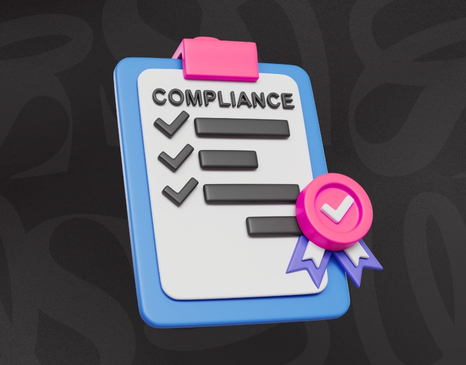Dentistry is one of the most heavily-regulated industries in terms of advertising and marketing. As a full-time content writer for dental practices, trust me, I feel your pain. It’s definitely tricky to highlight your clinic’s unique benefits and features when the rules say you can’t imply that you’re better, or even different than your competitors. The good news is it is possible.
I’ve put together this handy guide to help you navigate the minefield that is dentistry marketing. Follow along for some strategies to help you avoid breaking the rules without diluting your message too much.
Editor’s note: This blog represents our general interpretations of dental association bylaws and regulations. The advice listed here should in no way be counted as bona fide legal advice. If you are unsure of the standards for marketing in your area, we highly recommend reaching out to your local regulatory body for clarification.
What Are the Regulations?
I’d love to give you a comprehensive breakdown of every rule, but unfortunately, each province and territory has its own regulatory body with its own set of bylaws and standards. If you’re interested in finding out what the regulations are in your region, you can download this free guide, which lists the rules province by province and territory by territory.
While the standards for advertising are different for each region, there are a few rules that pop up in most, if not all, regulated areas. These are the most common, and by extension, the most important rules when writing any sort of ad or marketing copy.
Claims Must be Objectively Verifiable

Objective verifiability means that if someone reads your ad and says “prove it,” you’ll have concrete, factual data to back up your claim. This concept is really one of the most far-reaching and all-encompassing. We don’t usually use language in strict black-and-white, especially when it comes to marketing.
Ad copy is meant to be enticing, so we use exciting adjectives and other techniques to dress-up the statements we make. The problem is that a lot of the language we use just can’t be verified.
The rule of objective verifiability doesn’t just apply to dental staff either. It doesn’t matter who writes the statement; if it appears on your website, advertising, or any other kind of marketing materials, it has to abide by the rules. That’s why we usually try to dissuade the use of patient reviews or testimonials on our clients’ websites or ads.
While some regions don’t officially outlaw the use of patient testimonials, most regulatory bodies don’t allow them because they’re usually written based on feelings, which of course, are not objective and can’t be verified.
Examples of What Not to Do
The Best Dentistry Experience You’ll Ever Have
Calgary’s Favourite Dentist
Invisalign Works Better Than Traditional Braces
Marketing Materials Must Not Create Unreasonable Expectations

Nothing is guaranteed in the medical field. Though we know more about the human body than we ever have before, there’s still a lot we don’t fully understand. And of course, complications are always a possibility, even for relatively minor procedures. For you, all of this goes without saying. But for your patients, it might not be so obvious.
Regulatory bodies put a lot of emphasis on avoiding unreasonable expectations because it plays a crucial role in giving informed consent.
Let’s imagine that you tell me, a layperson, that porcelain veneers are just as permanent as natural teeth. That sounds good to me, so I jump on board. But after you’ve irrevocably changed my teeth, I find out that my veneers need to be replaced every 15 years or so. Now I’m committed to a treatment that I agreed to under false pretenses. I didn’t consent to undergoing this procedure multiple time; I consented to a one-time treatment with the expectation that it would last forever.
This example might seem a little bit extreme because the patient here would’ve been all-out lied to. But the same principle applies to absolute statements that don’t allow for the possibility of varied results or complications.
Examples of What Not to Do
Get the Perfect Smile You’ve Always Dreamed of
Remove Yellow Stains With Teeth Whitening
Dental Implants Will Restore Your Smile
Marketing Materials Must Not Demean the Profession of Dentistry
This one seems relatively obvious; don’t do or say anything silly or embarrassing. Lots of businesses use humour (which is sometimes self-deprecating) to market themselves. The thing is, dentistry is a medical field, and most regulatory bodies want you to respect that.
So while you could still use humour if you really wanted to, it’s critical that you avoid anything that pokes fun at yourself, your team, dentistry in general, and of course, your patients.
Examples of What Not to Do
Desperate to Get Drilled? Let Our Dentist Fill You
Altering the Statement Without Changing the Message
For the most part, you can still say what you want to say. You just need to be careful about how you say it. An awareness of subtext is pretty important here, but even avoiding absolute statements and using words like may, could, and might will go a long way to keep you on the right side of the rulebook.
I gave you some examples of what not to do in the sections above. Here, we’ll tackle revising the examples to comply with the general rules we’ve laid out without losing the key message. So, let’s dive in, shall we?
The Best Dentistry Experience You’ll Ever Have
You can’t measure someone’s experience before they’ve had it, and you certainly can’t guarantee that it will never get any better. Instead of focusing on how the patient will feel about their experience, highlight something that you can back up. For example:
Massage Chairs & Blankets for Your Comfort
Calgary’s Favourite Dentist
Unless you poll every Calgarian, you can’t make this claim. Lots of regulatory bodies don’t allow you to mention any sort of award either, so even if you’ve been voted “Calgary’s Favourite Dentist,” you still probably couldn’t make this claim. Again, try re-writing this based around a fact that also establishes your community involvement. For example:
Serving Calgarians since 1982
Invisalign Works Better Than Traditional Braces
This one might not seem like that much of a stretch because (at least according to Invisalign), Invisalign may actually work better than traditional braces. The problem with this statement is that it’s not specific enough, and it’s too concrete. Try re-writing it with a clearer definition of what “better” means, and make sure to leave room for exceptions. For example:
Invisalign may Produce Results in Less Time Than Traditional Braces
Get the Perfect Smile You’ve Always Dreamed of
Nothing is perfect. It’s just unethical to suggest that anyone’s ideal look is totally achievable. Even though the phrasing of this headline is far too gung-ho, the sentiment is still okay: that your teeth could be improved upon. Try letting go of flashy descriptors and just offering what’s 100% possible. For example:
Improve Your Smile
Remove Yellow Stains With Teeth Whitening
A patient reading this headline might expect that their teeth will be like Cesar Flickerman’s in the Hunger Games: absolutely dazzling.

Of course, the truth is that some stains are just too stubborn, and while whitening will certainly help, it may not remove them completely. You could fix this headline by once again stating the possibility clearly without overstating anything. For example:
Teeth Whitening May Reduce the Appearance of Stains
Dental Implants Will Restore Your Smile
This one is VERY close to being acceptable; the issue is the certainty in this statement. Not everyone is a candidate for dental implants. To avoid giving patients unrealistic expectations, you just water down the certainty a little bit.
Dental Implants May Restore Your Smile
Desperate to Get Drilled? Let Our Dentist Fill You
This headline is a bad idea from a-z. First of all, the not-so-subtle sexual reference is more likely to scare patients away than it is to bring them in. It also makes your dentist seem predatory rather than a trustworthy doctor. Finally, this copy doesn’t communicate anything useful. It implies your practice offers fillings, but that’s pretty typical of most general dentists. This example is really just the best/worst possible example of demeaning the practice of dentistry.
Instead of this, try delivering your message in a straightforward and professional manner. For example:
Offering a Full Range of General Dental Services
Why Does Compliance Matter?
Obviously, if you choose to ignore the rules and standards set by your local dental association, you run the risk of being fined, or possibly suspended. But the reality is that, unless the governing body in your area stumbles upon your website or ad, you’ll never be held accountable for any infractions. So why bother trying to follow all these rules?
The biggest reason boils down to credibility. Dentists are doctors, and consumers expect them to act that way. People are very cautious about their health, and rightly so. That’s why, when the time comes, your patients don’t want to be sold to, they want to be cared for. These guidelines help resist the temptation of using sparkly and buzzworthy marketing terms, and just providing honest answers about the options available to your patients.
Today, credibility is the biggest asset your marketing plan can feature. Google rewards credibility, and of course, patients value a credible dentist. By following these rules, you’re positioning yourself as an upstanding and patient-minded professional who cares more about healthy smiles than dollar signs.






